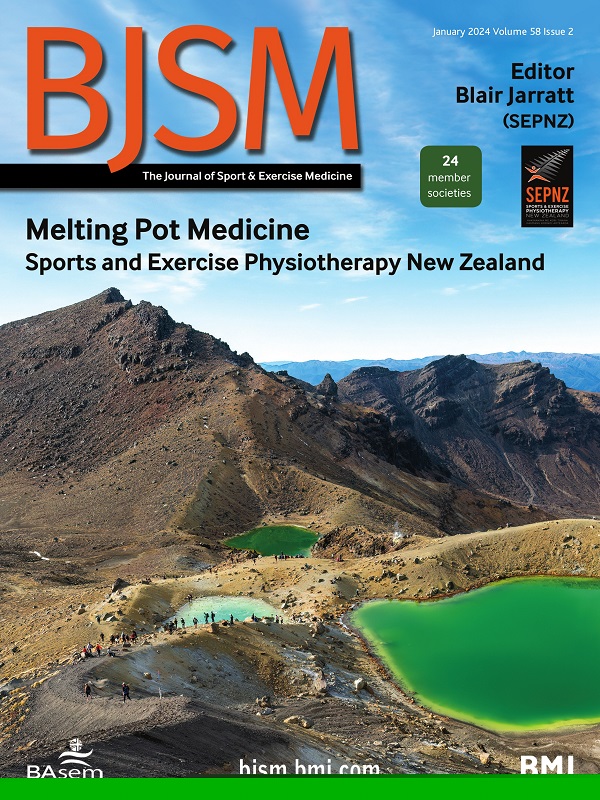培育自然:健康和性能的温室概念
IF 11.6
1区 医学
Q1 SPORT SCIENCES
引用次数: 0
摘要
多名奥运奖牌得主的教练将“温室效应”描述为创造一个稳定可靠的环境,以维持运动员能够茁壮成长和表现的成功的高绩效文化的结果类似的结构化环境方法也适用于对精英发展运动员的全面支持,这样他们不仅在运动中表现出色,而且还能成长为健壮和繁荣的人。为了优化运动员的发展和表现结果,运动员的身心健康的维护和支持是必不可少的。因此,限制伤害和疾病(包括心理健康状况)需要考虑运动员的整个发展历程情境驱动的预防策略处理伤害和疾病发生的复杂性和多因素性质,是社会生态系统的一部分,其中包括个人,社会文化和环境层面这篇社论提出了一种综合的和授权的方法来培养运动员在任何运动中的发展,旨在培养运动员的长期健康和表现。温室概念(图1)强调了培育优秀运动员(植物)从发展阶段(温室内)到最佳表现(温室外)的类比,通过提供一个多学科支持的途径(温室与园丁),既稳定又具有挑战性考虑到每个运动员独特的背景和环境要求,描述为最佳生长和发展的温室特征(就像植物一样),以长成健壮的精英运动员。该插图有助于与利益相关者就……本文章由计算机程序翻译,如有差异,请以英文原文为准。
Nurturing nature: the greenhouse concept for health and performance
Coaches of multiple Olympic medal-winning athletes have described the ‘greenhouse effect’ as the result of creating a stable and dependable environment to maintain a successful high-performance culture in which athletes can thrive and perform.1 A similarly structured environmental approach is also relevant in the context of holistic support of elite developing athletes, so they not only excel at their sport but also grow into robust and flourishing people. To optimise athlete development and performance outcomes, the maintenance and support of physical and psychological health of an athlete are essential. Therefore, limiting injury and illness (including mental health conditions) requires consideration across an athlete’s development journey.2 Contextual-driven prevention strategies addressing the complex and multifactorial nature of injury and illness occurrence are a part of the socioecological system, which includes individual, sociocultural and environmental levels.3 This editorial proposes an illustration of an integrative and empowering approach to athlete development in any sport aiming to grow an athlete holistically for long-term health and performance. The greenhouse concept (figure 1) highlights the analogy of nurturing elite athletes ( plants ) from the development stage ( inside the greenhouse ) to peak performance ( outside of the greenhouse ), by providing a multidisciplinary supported pathway ( greenhouse with gardeners ) of both stability and challenge.1 Consideration is given to each athlete’s unique contextual and environmental requirements described as greenhouse characteristics for optimal growth and development (just like a plant ) to grow robustness and flourish as an elite athlete. The illustration serves as a facilitator for communication to stakeholders about …
求助全文
通过发布文献求助,成功后即可免费获取论文全文。
去求助
来源期刊
CiteScore
27.10
自引率
4.90%
发文量
217
审稿时长
3-8 weeks
期刊介绍:
The British Journal of Sports Medicine (BJSM) is a dynamic platform that presents groundbreaking research, thought-provoking reviews, and meaningful discussions on sport and exercise medicine. Our focus encompasses various clinically-relevant aspects such as physiotherapy, physical therapy, and rehabilitation. With an aim to foster innovation, education, and knowledge translation, we strive to bridge the gap between research and practical implementation in the field. Our multi-media approach, including web, print, video, and audio resources, along with our active presence on social media, connects a global community of healthcare professionals dedicated to treating active individuals.

 求助内容:
求助内容: 应助结果提醒方式:
应助结果提醒方式:


